Urban Land Expansion from Scratch to Urban Agglomeration in the Federal District of Brazil in the Past 60 Years
Abstract
:1. Introduction
2. Materials and Methods
2.1. Study Area and Data Sources
2.2. Two Types of Spatial Scales
2.3. Urban Expansion Magnitude
2.4. Urban Land Patterns
2.5. Urban Expansion Modes
2.6. Urban Expansion Types
2.7. Urban Expansion Efficiency
3. Results
3.1. Urban Expansion Magnitude
3.2. Temporal Changes in Urban Land Patterns
3.3. Polycentric Urban Expansion
3.4. Spatio-Temporal Dynamics of Urban Expansion Types
3.5. Ratio of Land Consumption Rate to Population Growth Rate
4. Discussion
4.1. Suitability of the Diffusion—Coalescence Urban Expansion Theory in the FDB
4.2. Some Implications for Sustainable Urban Expansion in the FDB
5. Conclusions
Author Contributions
Funding
Institutional Review Board Statement
Informed Consent Statement
Conflicts of Interest
Appendix A
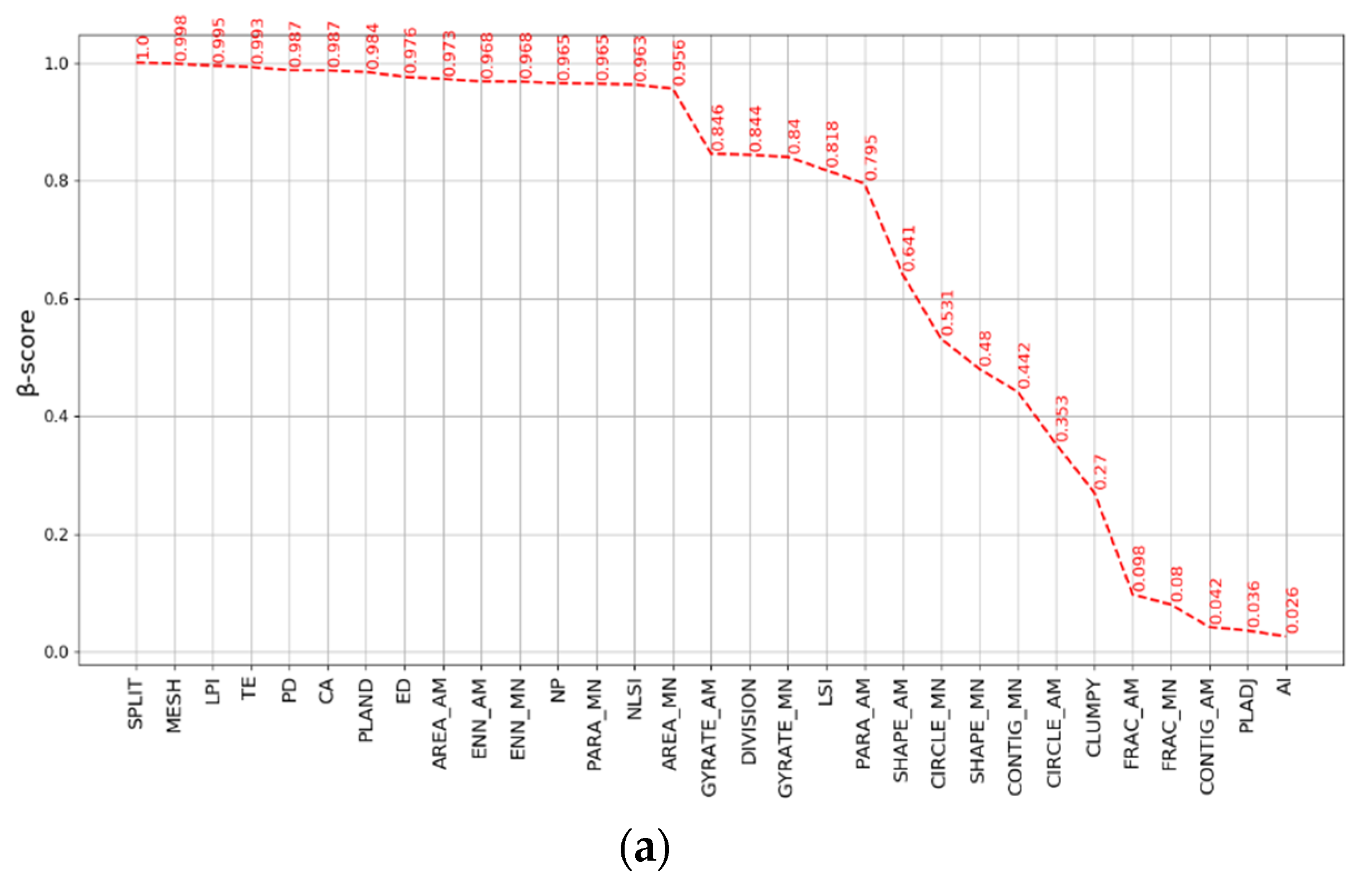
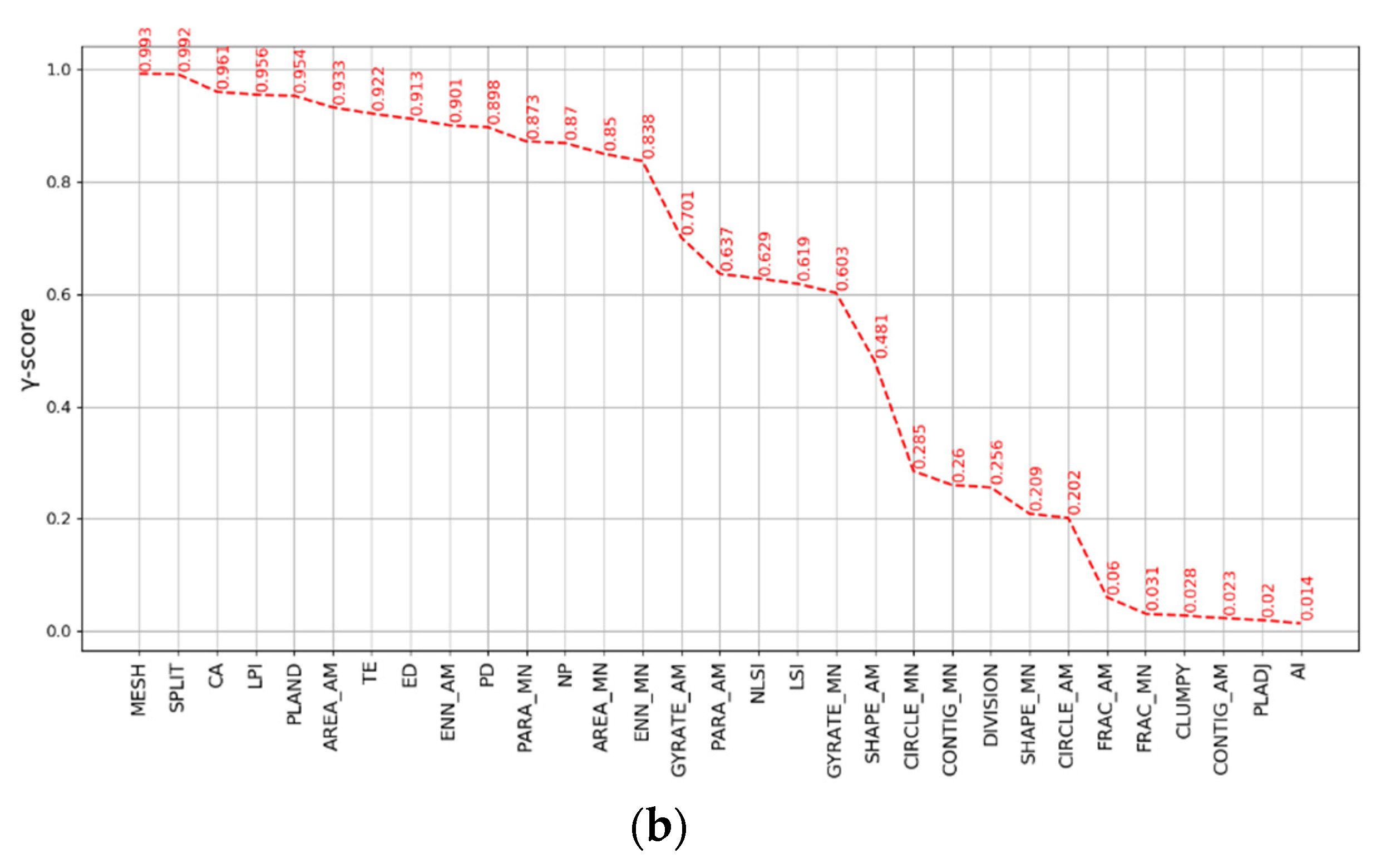
References
- UN. U.N. 68% of the World Population Projected to Live in Urban Areas by 2050. Available online: https://www.un.org/development/desa/en/news/population/2018-revision-of-world-urbanization-prospects.html (accessed on 25 August 2021).
- Stone, B.; Hess, J.J.; Frumkin, H. Urban form and extreme heat events: Are sprawling cities more vulnerable to climate change than compact cities? Environ. Health Perspect. 2010, 118, 1425–1428. [Google Scholar] [CrossRef] [Green Version]
- Seto, K.C.; Fragkias, M.; Guneralp, B.; Reilly, M.K. A meta-analysis of global urban land expansion. PLoS ONE 2011, 6, e23777. [Google Scholar] [CrossRef] [PubMed]
- Chen, G.; Glasmeier, A.K.; Zhang, M.; Shao, Y. Urbanization and Income Inequality in Post-Reform China: A Causal Analysis Based on Time Series Data. PLoS ONE 2016, 11, e0158826. [Google Scholar] [CrossRef]
- Cao, Q.; Yu, D.; Georgescu, M.; Wu, J.; Wang, W. Impacts of future urban expansion on summer climate and heat-related human health in eastern China. Environ. Int. 2018, 112, 134–146. [Google Scholar] [CrossRef]
- Xian, S.; Li, L.; Qi, Z. Toward a sustainable urban expansion: A case study of Zhuhai, China. J. Clean. Prod. 2019, 230, 276–285. [Google Scholar] [CrossRef]
- Xu, G.; Dong, T.; Cobbinah, P.B.; Jiao, L.; Sumari, N.S.; Chai, B.; Liu, Y. Urban expansion and form changes across African cities with a global outlook: Spatiotemporal analysis of urban land densities. J. Clean. Prod. 2019, 224, 802–810. [Google Scholar] [CrossRef]
- Fei, W.; Zhao, S. Urban land expansion in China’s six megacities from 1978 to 2015. Sci. Total Environ. 2019, 664, 60–71. [Google Scholar] [CrossRef] [PubMed]
- Xu, G.; Jiao, L.; Liu, J.; Shi, Z.; Zeng, C.; Liu, Y. Understanding urban expansion combining macro patterns and micro dynamics in three Southeast Asian megacities. Sci. Total Environ. 2019, 660, 375–383. [Google Scholar] [CrossRef] [PubMed]
- Yue, W.; Liu, Y.; Fan, P. Measuring urban sprawl and its drivers in large Chinese cities: The case of Hangzhou. Land Use Policy 2013, 31, 358–370. [Google Scholar] [CrossRef]
- Yang, C.; Li, Q.; Hu, Z.; Chen, J.; Shi, T.; Ding, K.; Wu, G. Spatiotemporal evolution of urban agglomerations in four major bay areas of US, China and Japan from 1987 to 2017: Evidence from remote sensing images. Sci. Total Environ. 2019, 671, 232–247. [Google Scholar] [CrossRef]
- Inostroza, L.; Baur, R.; Csaplovics, E. Urban sprawl and fragmentation in Latin America: A dynamic quantification and characterization of spatial patterns. J. Environ. Manag. 2013, 115, 87–97. [Google Scholar] [CrossRef]
- Andrade-Núñez, M.J.; Aide, T.M. Built-up expansion between 2001 and 2011 in South America continues well beyond the cities. Environ. Res. Lett. 2018, 13, 084006. [Google Scholar] [CrossRef]
- Duque, J.C.; Lozano-Gracia, N.; Patino, J.E.; Restrepo, P.; Velasquez, W.A. Spatiotemporal dynamics of urban growth in Latin American cities: An analysis using nighttime light imagery. Landsc. Urban Plan. 2019, 191, 103640. [Google Scholar] [CrossRef]
- Nong, D.H.; Lepczyk, C.A.; Miura, T.; Fox, J.M. Quantifying urban growth patterns in Hanoi using landscape expansion modes and time series spatial metrics. PLoS ONE 2018, 13, e0196940. [Google Scholar] [CrossRef] [Green Version]
- Agyemang, F.S.K.; Silva, E.; Poku-Boansi, M. Understanding the urban spatial structure of Sub-Saharan African cities using the case of urban development patterns of a Ghanaian city-region. Habitat Int. 2019, 85, 21–33. [Google Scholar] [CrossRef]
- Terfa, B.K.; Chen, N.; Liu, D.; Zhang, X.; Niyogi, D. Urban Expansion in Ethiopia from 1987 to 2017: Characteristics, Spatial Patterns, and Driving Forces. Sustainability 2019, 11, 2973. [Google Scholar] [CrossRef] [Green Version]
- Cai, G.; Zhang, J.; Du, M.; Li, C.; Peng, S. Identification of urban land use efficiency by indicator-SDG 11.3.1. PLoS ONE 2021, 15, e0244318. [Google Scholar] [CrossRef] [PubMed]
- Aburas, M.M.; Abdullah, S.H.; Ramli, M.F.; As’shari, Z.H. Landscape analysis of urban growth patterns in Seremban, Malaysia, using spatio-temporal data. IOP Conf. Ser. Earth Environ. Sci. 2016, 37, 012055. [Google Scholar] [CrossRef] [Green Version]
- Aburas, M.M.; Ho, Y.M.; Ramli, M.F.; Ash’aari, Z.H. Monitoring and assessment of urban growth patterns using spatio-temporal built-up area analysis. Environ. Monit Assess. 2018, 190, 156. [Google Scholar] [CrossRef] [PubMed]
- Aguilera, F.; Valenzuela, L.M.; Botequilha-Leitão, A. Landscape metrics in the analysis of urban land use patterns: A case study in a Spanish metropolitan area. Landsc. Urban Plan. 2011, 99, 226–238. [Google Scholar] [CrossRef]
- Huang, X.; Xia, J.; Xiao, R.; He, T. Urban expansion patterns of 291 Chinese cities, 1990–2015. Int. J. Digit. Earth 2017, 12, 62–77. [Google Scholar] [CrossRef]
- Irwin, E.; Bockstael, N. The evolution of urban sprawl: Evidence of spatial heterogeneity and increasing land fragmentation. Proc. Natl. Acad. Sci. USA 2007, 104, 20672–20677. [Google Scholar] [CrossRef] [PubMed] [Green Version]
- Qiao, Z.; Tian, G.; Zhang, L.; Xu, X. Influences of Urban Expansion on Urban Heat Island in Beijing during 1989–2010. Adv. Meteorol. 2014, 2014, 1–11. [Google Scholar] [CrossRef] [Green Version]
- Reis, J.P.; Silva, E.A.; Pinho, P. Spatial metrics to study urban patterns in growing and shrinking cities. Urban Geogr. 2015, 37, 246–271. [Google Scholar] [CrossRef]
- Seto, K.C.; Fragkias, M. Quantifying Spatiotemporal Patterns of Urban Land-use Change in Four Cities of China with Time Series Landscape Metrics. Landsc. Ecol. 2005, 20, 871–888. [Google Scholar] [CrossRef]
- Yue, W.; Liu, Y.; Fan, P. Polycentric Urban Development: The Case of Hangzhou. Environ. Plan. A Econ. Space 2010, 42, 563–577. [Google Scholar] [CrossRef]
- Yue, W.; Qiu, S.; Xu, H.; Xu, L.; Zhang, L. Polycentric urban development and urban thermal environment: A case of Hangzhou, China. Landsc. Urban Plan. 2019, 189, 58–70. [Google Scholar] [CrossRef]
- Li, Z.; Roux, E.; Dessay, N.; Girod, R.; Stefani, A.; Nacher, M.; Moiret, A.; Seyler, F. Mapping a Knowledge-Based Malaria Hazard Index Related to Landscape Using Remote Sensing: Application to the Cross-Border Area between French Guiana and Brazil. Remote Sens. 2016, 8, 319. [Google Scholar] [CrossRef] [Green Version]
- Lustig, A.; Stouffer, D.B.; Roigé, M.; Worner, S.P. Towards more predictable and consistent landscape metrics across spatial scales. Ecol. Indic. 2015, 57, 11–21. [Google Scholar] [CrossRef]
- Liu, Y.; Liu, X.; Gao, S.; Gong, L.; Kang, C.; Zhi, Y.; Chi, G.; Shi, L. Social Sensing: A New Approach to Understanding Our Socioeconomic Environments. Ann. Assoc. Am. Geogr. 2015, 105, 512–530. [Google Scholar] [CrossRef]
- Nicolau, R.; David, J.; Caetano, M.; Pereira, J.M.C. Ratio of Land Consumption Rate to Population Growth Rate—Analysis of Different Formulations Applied to Mainland Portugal. ISPRS Int. J. Geo-Inf. 2019, 8, 10. [Google Scholar] [CrossRef] [Green Version]
- Dietzel, C.; Herold, M.; Hemphill, J.J.; Clarke, K.C. Spatio-temporal dynamics in California’s Central Valley: Empirical links to urban theory. Int. J. Geogr. Inf. Sci. 2005, 19, 175–195. [Google Scholar] [CrossRef]
- Dietzel, C.; Oguz, H.; Hemphill, J.J.; Clarke, K.C.; Gazulis, N. Diffusion and Coalescence of the Houston Metropolitan Area: Evidence Supporting a New Urban Theory. Environ. Plan. B Plan. Des. 2005, 32, 231–246. [Google Scholar] [CrossRef] [Green Version]
- Schneider, A.; Woodcock, C.E. Compact, Dispersed, Fragmented, Extensive? A Comparison of Urban Growth in Twenty-five Global Cities using Remotely Sensed Data, Pattern Metrics and Census Information. Urban Stud. 2008, 45, 659–692. [Google Scholar] [CrossRef]
- UNESCO. World Heritage List. Available online: https://whc.unesco.org/en/list/445/ (accessed on 25 August 2021).
- Costa, C.; Lee, S. The Evolution of Urban Spatial Structure in Brasília: Focusing on the Role of Urban Development Policies. Sustainability 2019, 11, 553. [Google Scholar] [CrossRef] [Green Version]
- Lal, K.; Kumar, D.; Kumar, A. Spatio-temporal landscape modeling of urban growth patterns in Dhanbad Urban Agglomeration, India using geoinformatics techniques. Egypt. J. Remote Sens. Space Sci. 2017, 20, 91–102. [Google Scholar] [CrossRef]
- Qian, Y.; Wu, Z. Study on Urban Expansion Using the Spatial and Temporal Dynamic Changes in the Impervious Surface in Nanjing. Sustainability 2019, 11, 933. [Google Scholar] [CrossRef] [Green Version]
- Zhang, Z.; Li, N.; Wang, X.; Liu, F.; Yang, L. A Comparative Study of Urban Expansion in Beijing, Tianjin and Tangshan from the 1970s to 2013. Remote Sens. 2016, 8, 496. [Google Scholar] [CrossRef] [Green Version]
- McGarigal, K.; Cushman, S.; Ene, E. FRAGSTATS v4: Spatial Pattern Analysis Program for Categorical and Continuous Maps. Computer software Program Produced by the Authors at the University of Massachusetts, Amherst. Available online: http://www.umass.edu/landeco/research/fragstats/fragstats.html (accessed on 26 April 2019).
- Wang, X.; Blanchet, F.G.; Koper, N.; Tatem, A. Measuring habitat fragmentation: An evaluation of landscape pattern metrics. Methods Ecol. Evol. 2014, 5, 634–646. [Google Scholar] [CrossRef]
- Wu, J. Effects of changing scale on landscape pattern analysis: Scaling relations. Landsc. Ecol. 2004, 19, 125–138. [Google Scholar] [CrossRef]
- Ma, Q.; Wu, J.; He, C.; Hu, G. Spatial scaling of urban impervious surfaces across evolving landscapes: From cities to urban regions. Landsc. Urban Plan. 2018, 175, 50–61. [Google Scholar] [CrossRef]
- De Clercq, E.M.; Vandemoortele, F.; De Wulf, R.R. A method for the selection of relevant pattern indices for monitoring of spatial forest cover pattern at a regional scale. Int. J. Appl. Earth Obs. Geoinf. 2006, 8, 113–125. [Google Scholar] [CrossRef]
- Sinha, P.; Kumar, L.; Reid, N. Rank-Based Methods for Selection of Landscape Metrics for Land Cover Pattern Change Detection. Remote Sens. 2016, 8, 107. [Google Scholar] [CrossRef] [Green Version]
- Anselin, L.; Syabri, I.; Kho, Y. GeoDa: An Introduction to Spatial Data Analysis. Geogr. Anal. 2006, 38, 5–22. [Google Scholar] [CrossRef]
- Liu, X.; Li, X.; Chen, Y.; Tan, Z.; Li, S.; Ai, B. A new landscape index for quantifying urban expansion using multi-temporal remotely sensed data. Landsc. Ecol. 2010, 25, 671–682. [Google Scholar] [CrossRef]
- Li, C.; Li, J.; Wu, J. Quantifying the speed, growth modes, and landscape pattern changes of urbanization: A hierarchical patch dynamics approach. Landsc. Ecol. 2013, 28, 1875–1888. [Google Scholar] [CrossRef]
- Madaleno, I.M. Brasilia: The frontier capital. Cities 1996, 13, 273–280. [Google Scholar] [CrossRef]
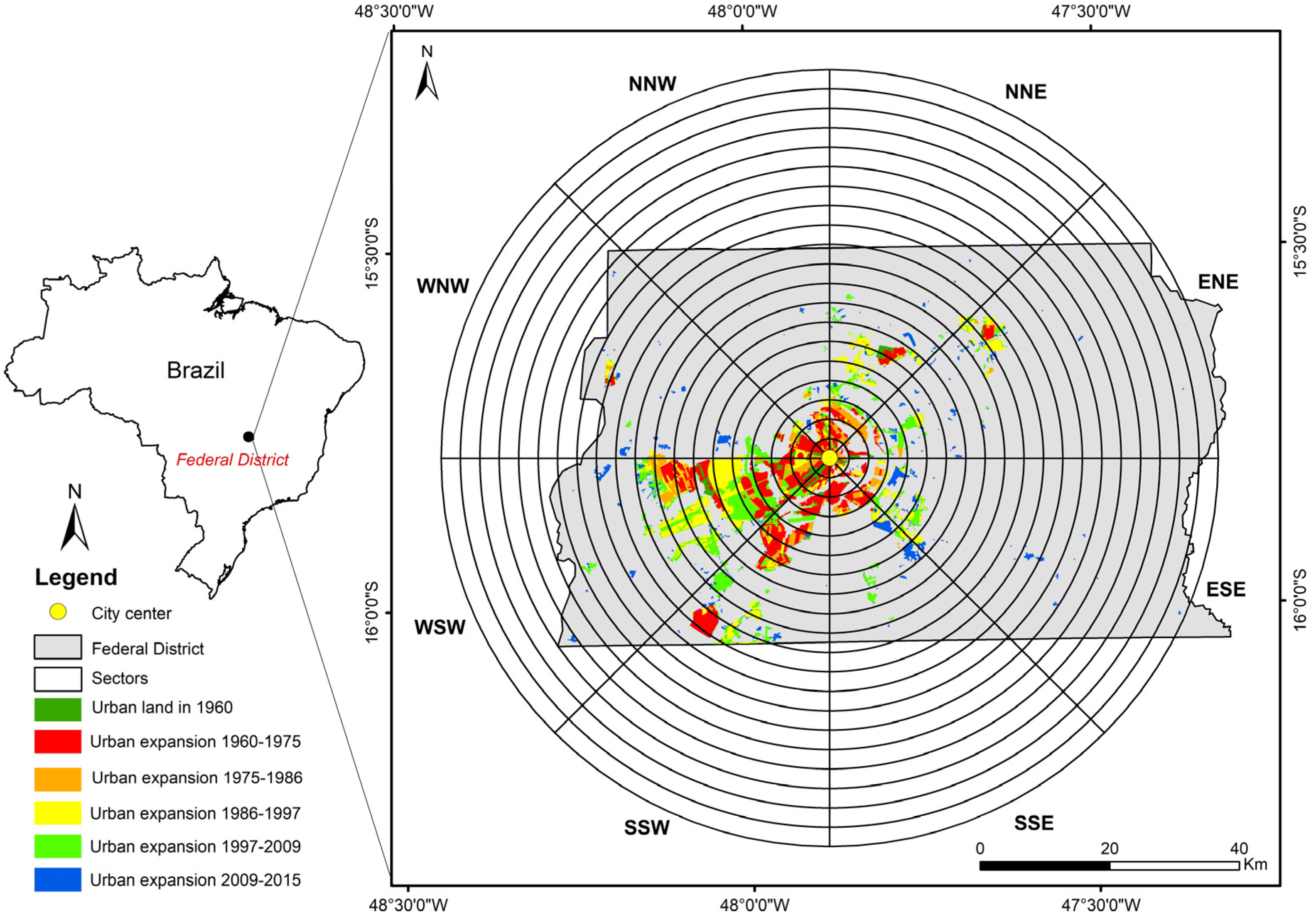
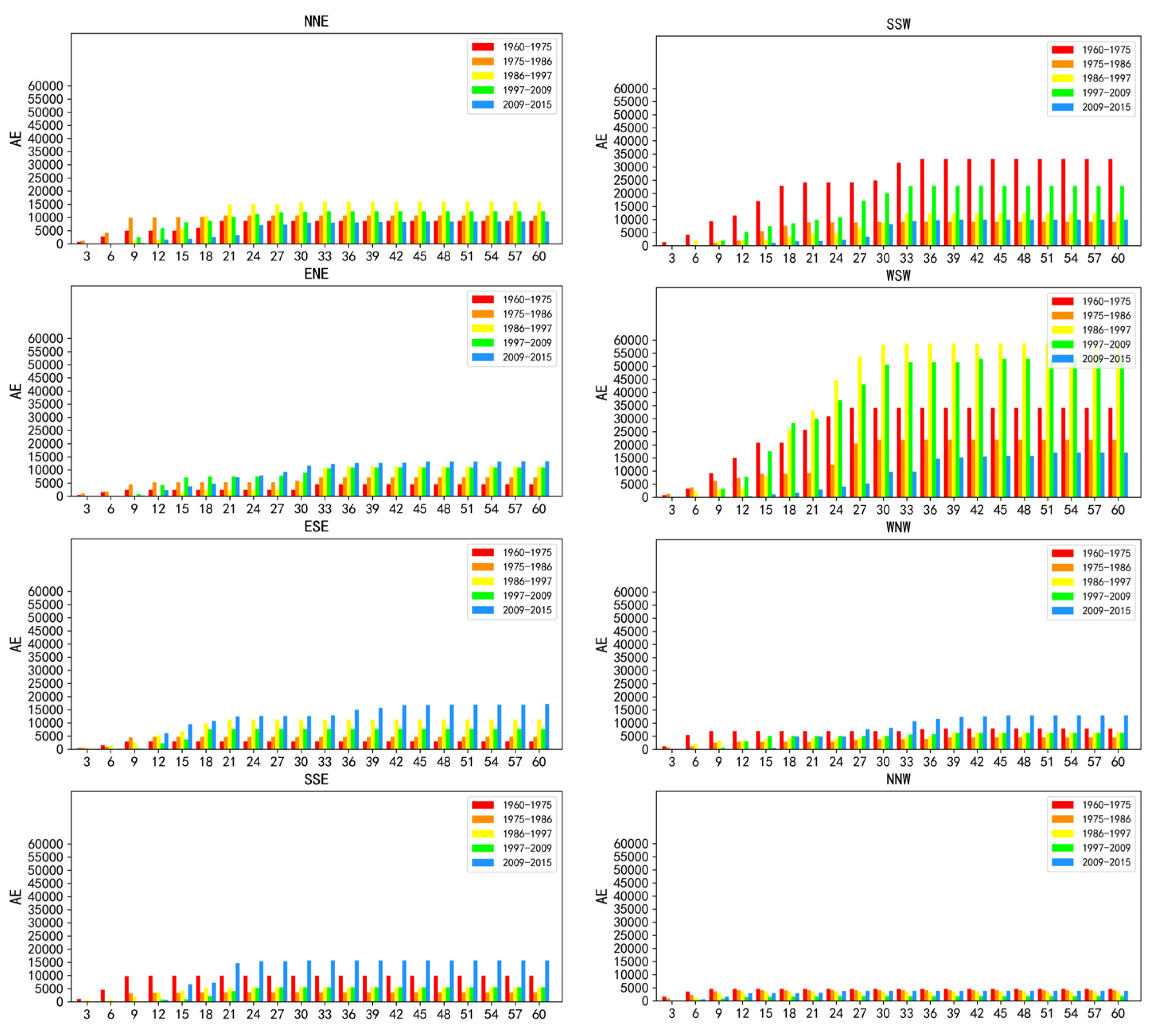
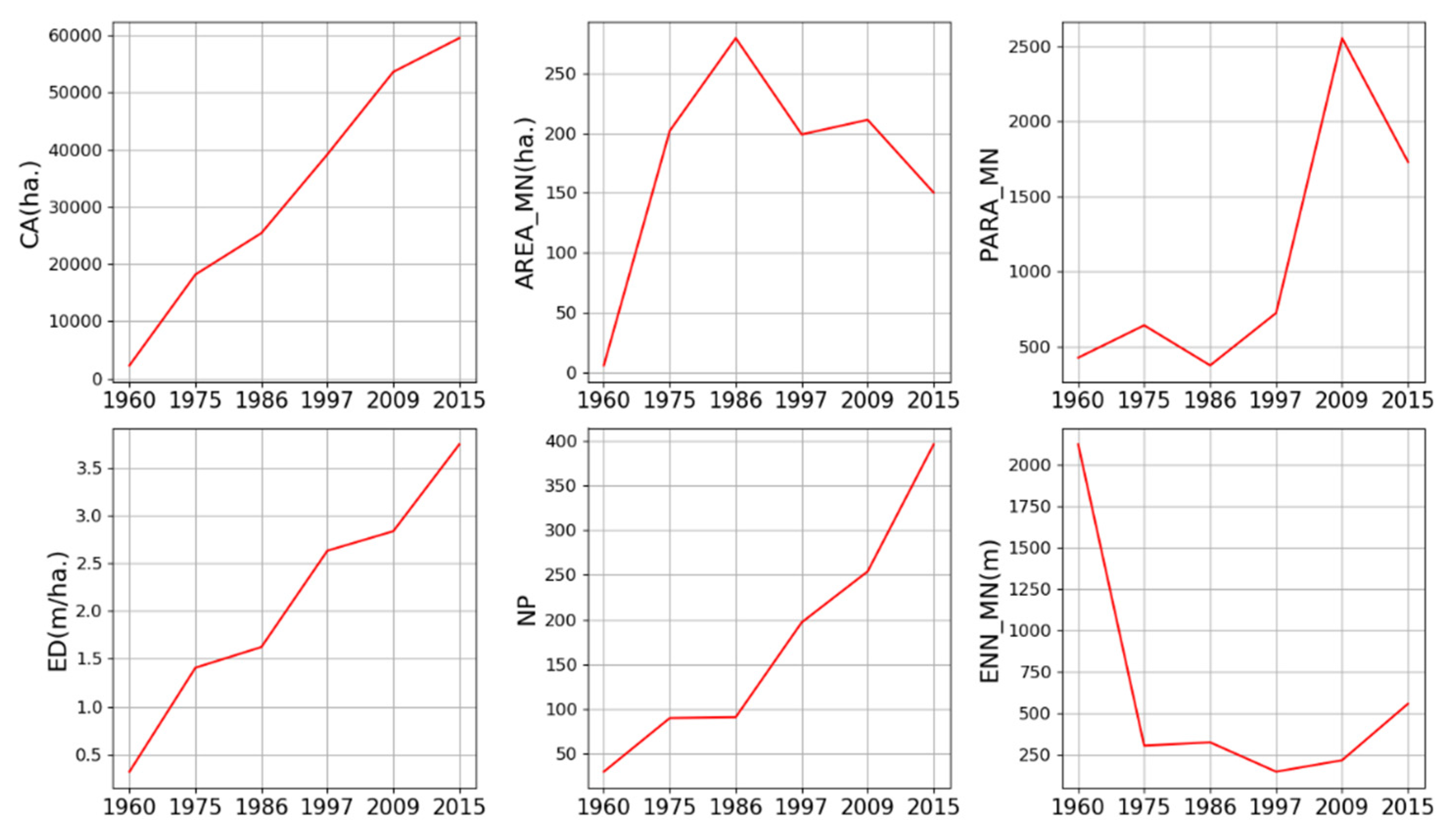

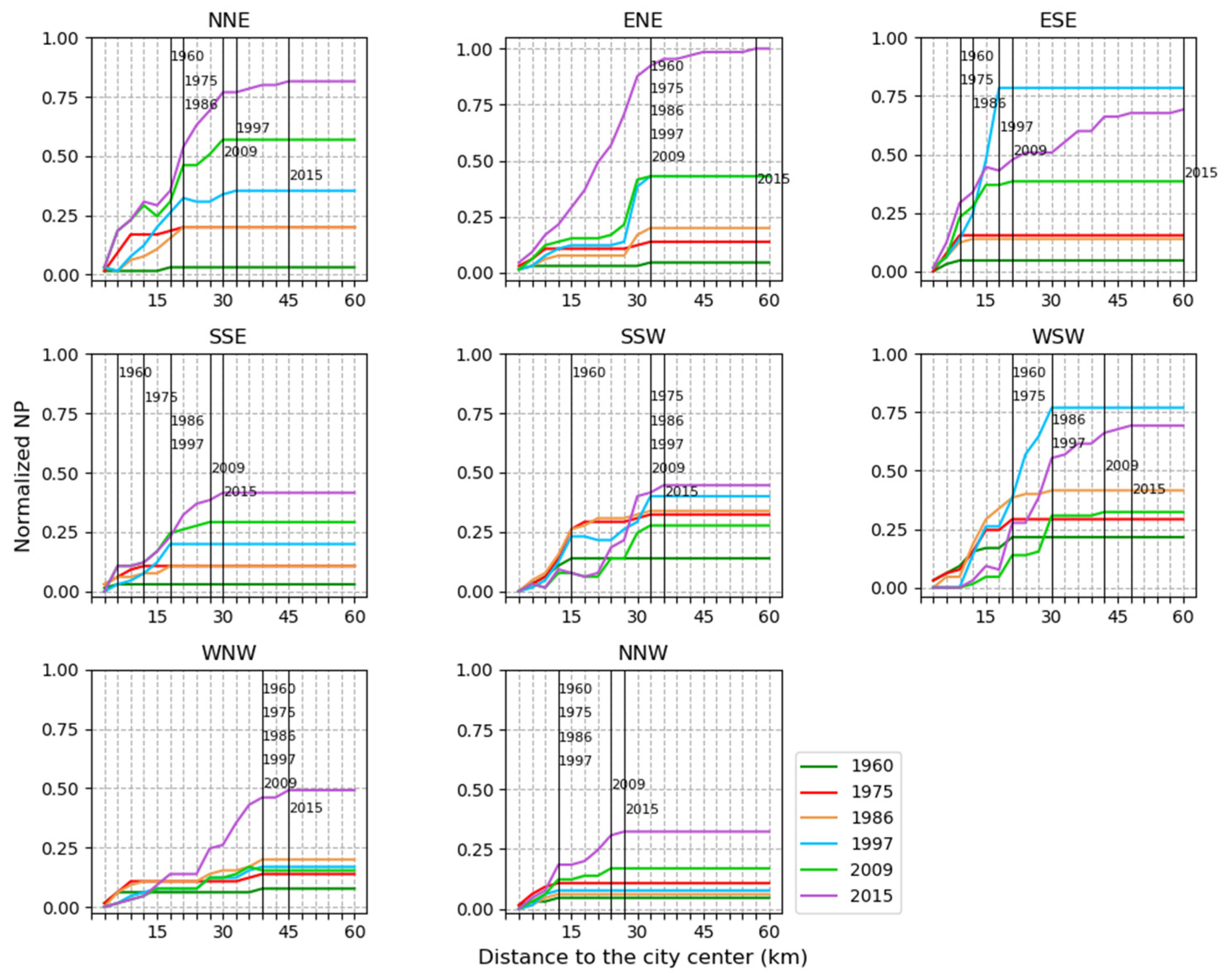
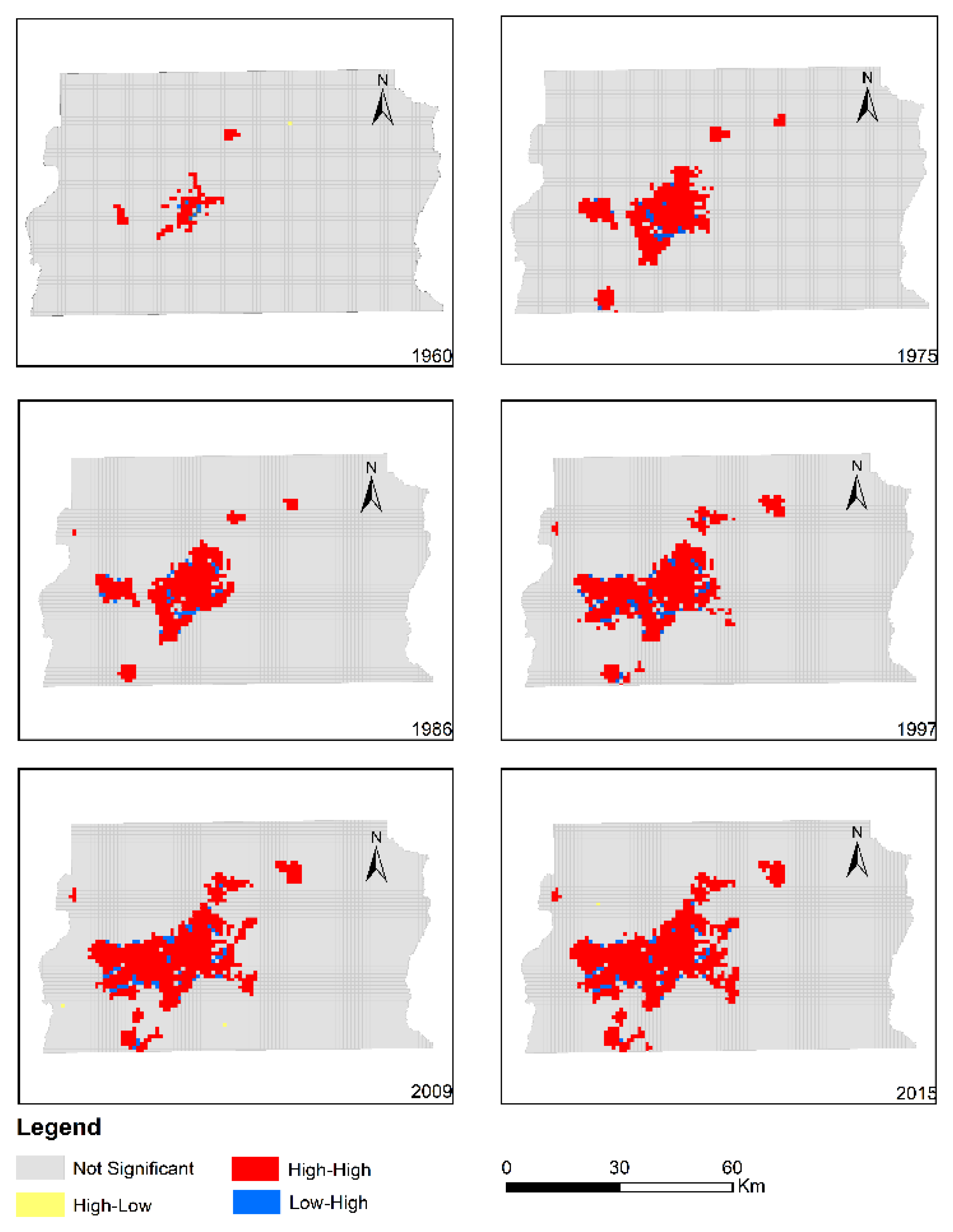
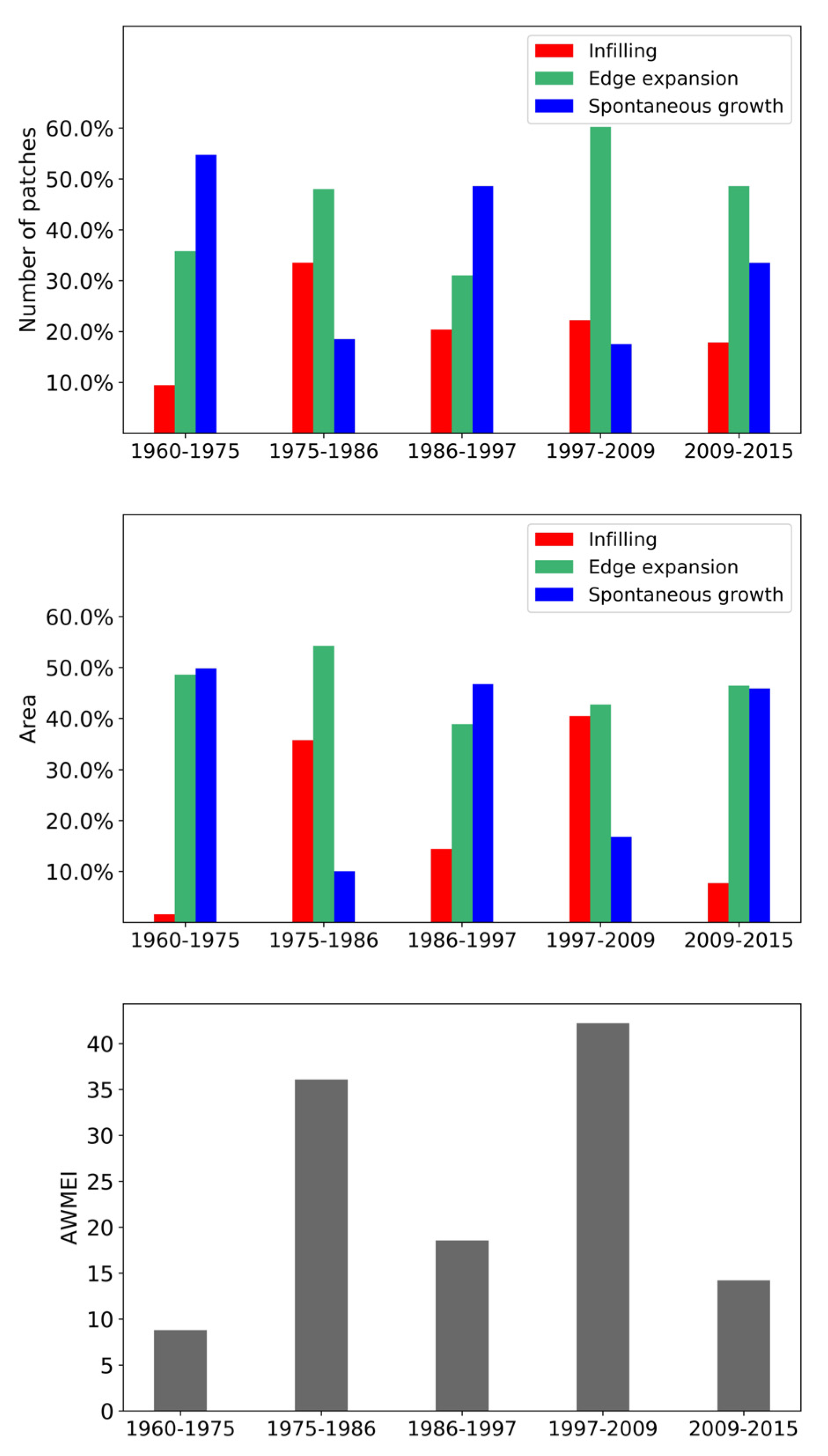


| Urban Expansion Analysis | Spatial Scales | Description | |
|---|---|---|---|
| Sectors | FDB | ||
| Urban expansion magnitude | ✓ | ✓ | Quantifying the area of annual expansion of urbanized land |
| Urban land patterns | ✓ | ✓ | Quantifying the compositional and configurational patterns of urban land |
| Urban expansion modes | X | ✓ | Identifying the expansion modes: monocentric or polycentric |
| Urban expansion types | X | ✓ | Identifying the expansion types of newly urban land: Infilling expansion, edge expansion and spontaneous growth |
| Urban expansion efficiency | X | ✓ | Indicating whether the urban expansion in the FDB is inclusive and sustainable |
| Metric (Abbreviation) | Description Adapted from [41] | Units | Range |
|---|---|---|---|
| Class area (CA) | The sum of the area of urban land patches in the analysis unit | Hectares | ≥0 |
| Mean patch area (AREA_MN) | The average area of urban land patches in the analysis unit | Hectares | ≥0 |
| Mean perimeter-area ratio (PARA_MN) | Simple ratio of perimeter to area for each urban land patch in the analysis unit | None | ≥0 |
| Edge density (ED) | Total length of urban land edges in the computation unit, per hectare | Meters/ hectare | ≥0, no limit |
| Number of patches (NP) | Total number of urban land patches in the analysis unit | None | >0 |
| Mean Euclidean neighbor distance (ENN_MN) | Average distance between two urban land patches in the computation unit, based on the nearest cell center-to-center | Meters | ≥0, no limit |
| Time Periods | Annual Expansion (km2) |
|---|---|
| 1960–1975 | 10.6 |
| 1975–1986 | 6.5 |
| 1986–1997 | 12.5 |
| 1997–2009 | 12.1 |
| 2009–2015 | 10.3 |
| Landscape Metrics | Mean β-Score | Mean γ-Score |
|---|---|---|
| CA | 0.987 | 0.961 |
| AREA_MN | 0.956 | 0.850 |
| PARA_MN | 0.965 | 0.873 |
| ED | 0.976 | 0.913 |
| NP | 0.965 | 0.870 |
| ENN_MN | 0.968 | 0.838 |
| Time Periods | LCR | PGR | LCRPGR |
|---|---|---|---|
| 1960–1975 | 0.120 | 0.138 | 0.867 |
| 1975–1986 | 0.061 | 0.025 | 2.510 |
| 1986–1997 | 0.041 | 0.045 | 0.925 |
| 1997–2009 | 0.029 | 0.026 | 1.126 |
| 2009–2015 | 0.023 | 0.017 | 1.337 |
| 1960–2015 | 0.062 | 0.059 | 1.047 |
| Time Periods | CA | NP | AREA_MN | ENN_MN | Urban Expansion Types | AWMEI | Urban Expansion Phases |
|---|---|---|---|---|---|---|---|
| 1960–1975 | ↑ | ↑ | ↑ | ↓ | E + S | Low | Diffusion |
| 1975–1986 | ↑ | - | ↑ | — | E + I | High | Coalescence |
| 1986–1997 | ↑ | ↑ | ↓ | ↓ | E + S | Low | Diffusion |
| 1997–2009 | ↑ | ↑ | — | ↑ | E + I | High | Coalescence |
| 2009–2015 | ↑ | ↑ | ↓ | ↑ | E + S | Low | Diffusion |
Publisher’s Note: MDPI stays neutral with regard to jurisdictional claims in published maps and institutional affiliations. |
© 2022 by the authors. Licensee MDPI, Basel, Switzerland. This article is an open access article distributed under the terms and conditions of the Creative Commons Attribution (CC BY) license (https://creativecommons.org/licenses/by/4.0/).
Share and Cite
Li, Z.; Gurgel, H.; Li, M.; Dessay, N.; Gong, P. Urban Land Expansion from Scratch to Urban Agglomeration in the Federal District of Brazil in the Past 60 Years. Int. J. Environ. Res. Public Health 2022, 19, 1032. https://doi.org/10.3390/ijerph19031032
Li Z, Gurgel H, Li M, Dessay N, Gong P. Urban Land Expansion from Scratch to Urban Agglomeration in the Federal District of Brazil in the Past 60 Years. International Journal of Environmental Research and Public Health. 2022; 19(3):1032. https://doi.org/10.3390/ijerph19031032
Chicago/Turabian StyleLi, Zhichao, Helen Gurgel, Minmin Li, Nadine Dessay, and Peng Gong. 2022. "Urban Land Expansion from Scratch to Urban Agglomeration in the Federal District of Brazil in the Past 60 Years" International Journal of Environmental Research and Public Health 19, no. 3: 1032. https://doi.org/10.3390/ijerph19031032
APA StyleLi, Z., Gurgel, H., Li, M., Dessay, N., & Gong, P. (2022). Urban Land Expansion from Scratch to Urban Agglomeration in the Federal District of Brazil in the Past 60 Years. International Journal of Environmental Research and Public Health, 19(3), 1032. https://doi.org/10.3390/ijerph19031032








